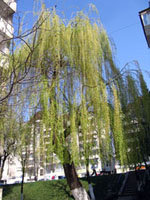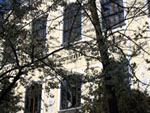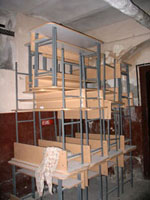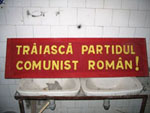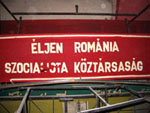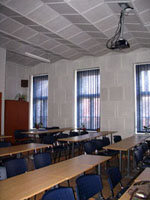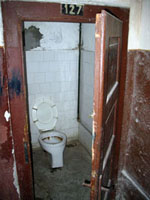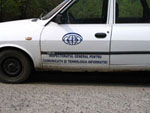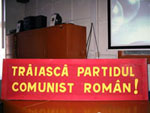Wednesday I got a notice in my mailbox stating that a package awaited me at the local post office. I was notified, as usual, that the postal staff would be available to assist me in retrieving this package from 8 – 3 on Tuesdays and Thursdays. I get to the post office a half an hour late and although the lady who does all the paperwork is still there, I can’t pick up the package. Admittedly, I was late, and no, I’ve never had any massive problems before.
However, I am freshly piqued about the absurdity of this Communist-era system. It boils down to the fact that the pickup window is far too small. Think about it, 8 – 3 on Tuesday and Thursday; working hours on two work days. This assumes that the person who needs to retrieve his/her package will be able to somehow leave work, go all the way to the post office, wait in line, and then return. If this person had a half hour lunch break, this might be accomplished, with little or no time to spare. However, in Romania, the workday trend is to begin early, around 8 and continue straight through until roughly 3. After work, most individuals return home for lunch, which is the primary daily meal here. Therefore, since the odds of a person having a lunch-break are slim, and it is likely that this person’s working hours are at least 8 – 3, the package pickup window, (Tues/Thurs 8-3,) could not possibly be less convenient.
The real kicker, though, is the absurdity of the customs process. Whereas amazon.com shipments are expedited to a full service window, (i.e. they can be picked up any time,) shipments originating from foreign countries necessitate a customs inspection. However, this inspection is farcical at best, and in my opinion, vestigial of the built-in corruption endemic during the Communist era. The pickup process entails 2 stops. First, you present your ID card to a postal worker who writes your ID number somewhere on the package’s shipping label. After you sign somewhere, anywhere on that label, the clerk goes into a back room to retrieve your package. The package is then placed on a scale, at which point the clerk cuts it open.
Then, responsibility is transfered to the visiting customs official. Not simply a lowly postal worker, the customs official has his own uniform and log-book; he has come to the post office from the central customs office to perform his bi-weekly duty. The extent of this duty differs widely. Those customs officials used to snooping and in all likelihood seeking something from which to extract a bribe (in the old days of course,) will take everything out of the package and question why you could possibly want such things. However, I must give credit where credit is due and state that this variety of customs worker has been rare, and reportedly becoming rarer; bravo Romania! Most of said officials will simply peer in the box, or pull out the topmost item only to quickly send you on your way. You need not sign again.
But, here comes the real treat. The past 3 or 4 packages I have retrieved did not even make it to step 2; that is, they were never opened. I’ve heard rumors that this is due to the fact that it is technically illegal to open and inspect these packages; perhaps though the staff have simply lost interest in examining my massive candy shipments. Regardless, this non-enforcement of step 2 renders the customs official a mere looker-overer; his only function in my last few pickups has been to acknowledge, via nod, that the package has been retrieved. As I said, sitting behind his little pane of glass in his neat uniform and large log-book, he resembles a vestigial organ no longer quite sure of its purpose, content only with the fact that it may still, sporadically, cause problems.
So, when I arrived a half hour late to find the customs officer gone and the postal worker unwilling to get me my package which stood just feet behind her, I consoled myself with the fact that my minor inconvenience was simply a symptom of a larger unresolved issue in Romania. Given the country’s unwillingness to engage in sincere reform, many practices from old eras persist to this day. I am positive that this is the case with foreign package pickup. This is also the case with the grade registers in the schools, as well as pretty much all other aspects of the educational system. I’d bet that even if the post office was to begin tracking packages by computer, that when all was said and done, the object of efficiency would still only be available on Tuesday and Thursday, from 8 – 3.



